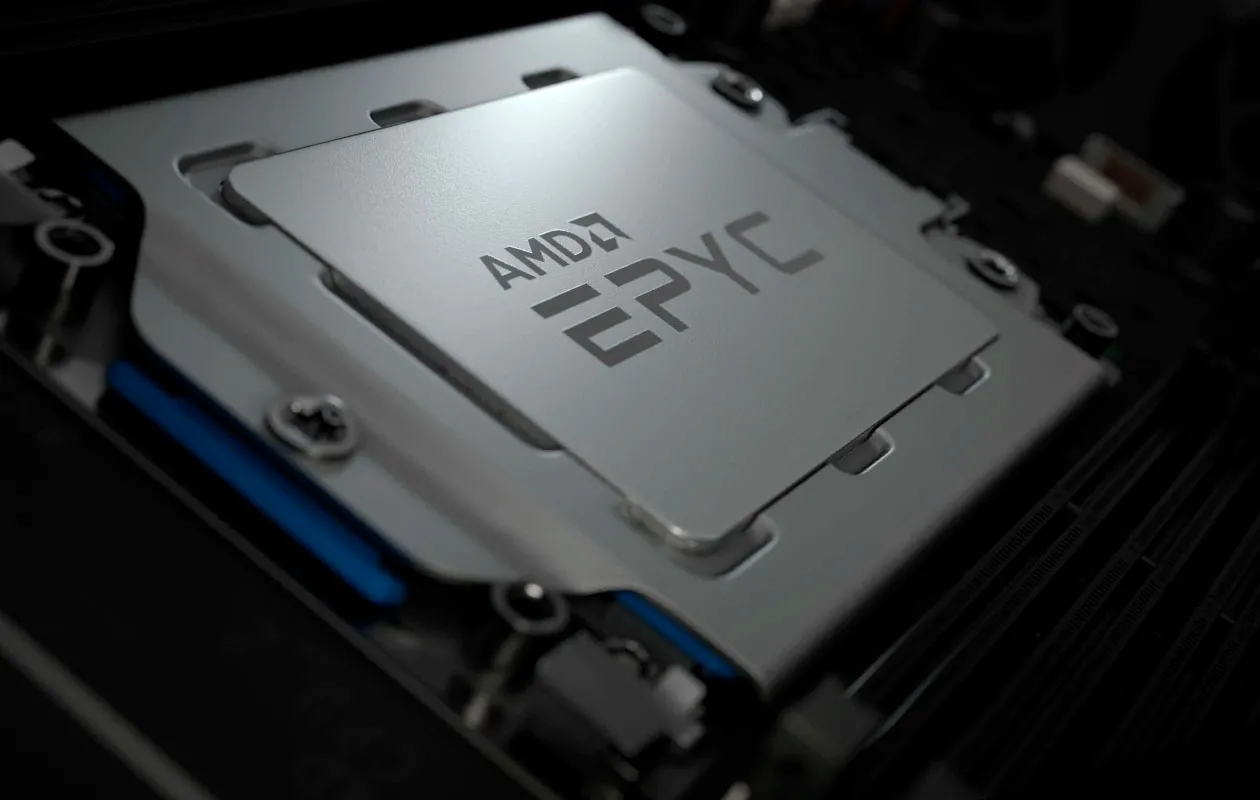
AMD EPYC Powers New Polaris Supercomputer at Argonne National Laboratory
The U.S. Department of Energy has selected AMD EPYC processors to power the new Polaris supercomputer at Argonne National Laboratory, paving the way for the upcoming exascale system, Aurora. This announcement from AMD highlights the growing importance of EPYC CPUs in high-performance computing.
Polaris, built by Hewlett Packard Enterprise (HPE), utilizes 2nd Gen AMD EPYC processors and is designed for seamless upgrades to 3rd Gen EPYC CPUs. This powerful system will empower researchers to tackle complex tasks in artificial intelligence, engineering, and various scientific fields that demand substantial computational resources.
 AMD EPYC processors in a server rack.
AMD EPYC processors in a server rack.
Currently in its final testing phase, Polaris combines AMD EPYC 7532 and EPYC 7543 processors with NVIDIA A100 GPUs, achieving a peak performance of 44 petaflops. This represents a fourfold increase in computing power compared to Argonne’s existing supercomputer infrastructure.
The Department of Energy will leverage Polaris for various research initiatives, focusing on optimizing the use of multiple CPUs and GPUs in preparation for future exascale systems. One key area of research will be the efficient utilization of heterogeneous computing architectures, combining the strengths of CPUs and GPUs for maximum performance.
This new system will be instrumental in advancing scientific discovery across various domains, including materials science, climate modeling, and drug discovery. The increased computational power will enable researchers to run larger and more complex simulations, accelerating the pace of innovation.
Polaris is slated to be fully operational in early 2022. This milestone marks a significant step towards exascale computing and underscores the importance of advanced computing resources in addressing critical scientific challenges. The insights gained from Polaris will directly contribute to the development and deployment of Aurora, Argonne’s forthcoming exascale supercomputer. This powerful new system promises to unlock unprecedented capabilities for scientific research and discovery.





Comments (0)